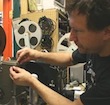
|
my profile | my password | search | faq | register | forum home |
 
|
|
 UBBFriend: Email this page to someone! UBBFriend: Email this page to someone!
|
This topic comprises 2 pages: 1 2 |
| ||||||||||||||||||||||||||||||||||||||||||||||||||||||||||||||||||||||||||||||||||||||||||||||||||||||
| All times are Central |
This topic comprises 2 pages: 1 2 |
|
 Printer-friendly view of this topic Printer-friendly view of this topic
|





![[Wink]](wink.gif)


![[Smile]](smile.gif)


![[Big Grin]](biggrin.gif) ) hence it works on a Matt White screen.
) hence it works on a Matt White screen.


